This post is part of a spin-along through 51 Yarns by Jacey Boggs Faulkner, in the Wool n’ Spinning community. For other posts in this series, check here.
With these two yarns, we started a new chapter. This month and next, it’s all about woolen and worsted: the prep, the draft, the yarn and fabric they make, the extremes and the in betweens.
There are four yarns assigned: true woolen, true worsted, semi-woolen, and semi-worsted. I’m treating all four as one big spin, so I can have it all: comparing prep, draft, yarn, fabric – and while I’m at it, I’ll be doing my own sort of interpretation of this year’s color study. But more on that another day.
This month it’s all about the “true” woolen and worsted. I have a certain dislike for the “true” label because it feels so value-laden. It makes me feel like I’m apologizing for my yarn if it doesn’t meet every last criteria of purity. I’d rather call them “extreme” woolen and worsted, partly because it sounds like my yarn is riding a skateboard, but mostly to recognize that there’s a spectrum. Even if a yarn doesn’t tick all the boxes for worsted or woolen purity, it can be way over near the edge.
That’s the case with my yarns. Because I’m starting with commercial combed top, I’m not all the way on the edge. But that’s as close as I’m getting right now, and I’m ok with that. This is definitely as extreme as my yarns have gotten in both directions!
These yarns were prepped together, spun together, finished together, and are still being knit together. Rather than discuss them separately, I’ll do a few posts comparing their processes and results. Today I’ll talk about prep.
Extreme Woolen Prep
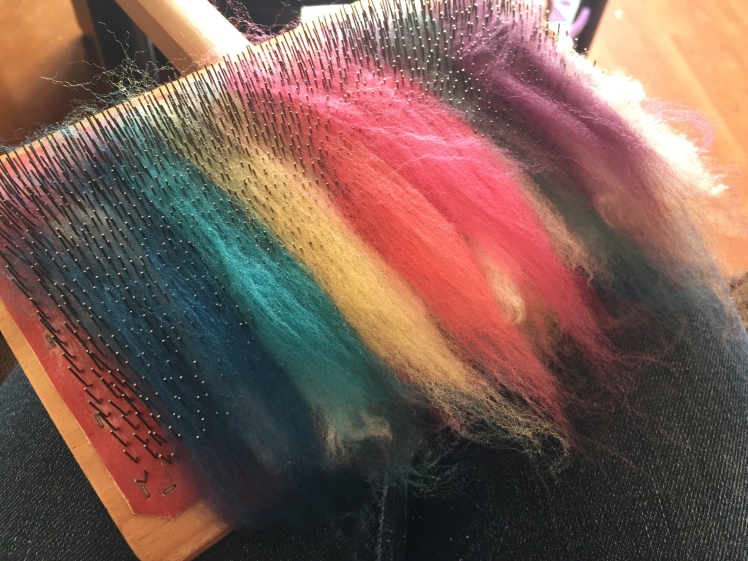
For each of these yarns, I started with the targhee kit from last summer’s breed and color study. It was eight very bright colors, which last year I spun into yarn for a cowl.
I made a blend of two parts targhee and one part white Suffolk leftover from Yarn 4. The Suffolk went in the middle of a targhee sandwich, which then got two passes.
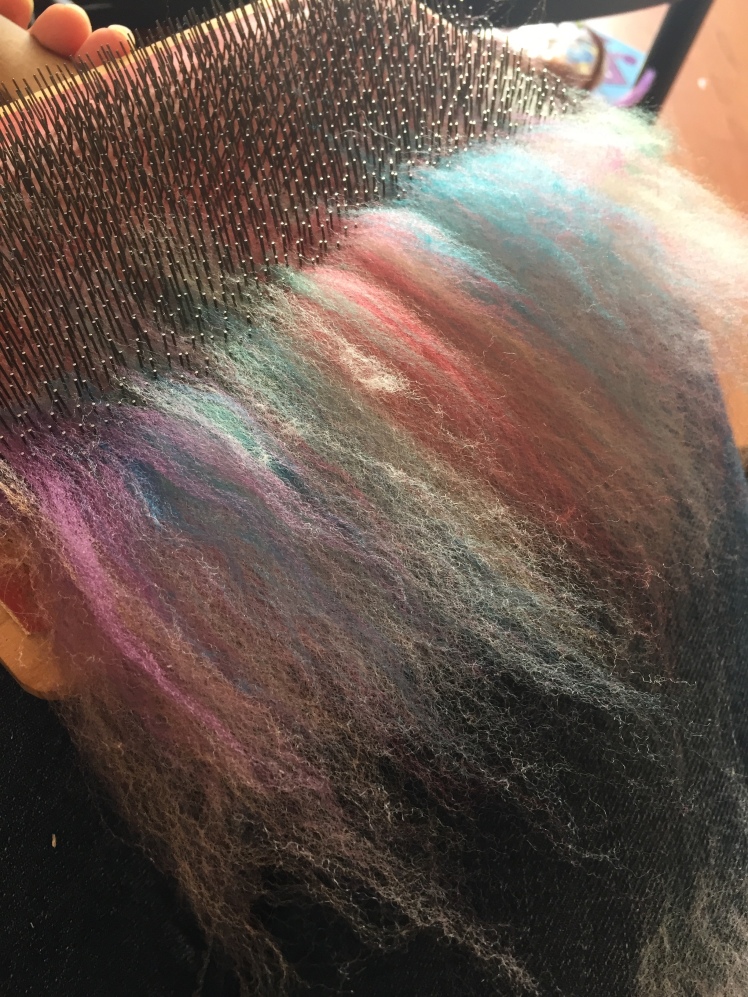
The result was the beautiful pile of rolags below on the left. (I’ll talk about what’s on the right next month.)

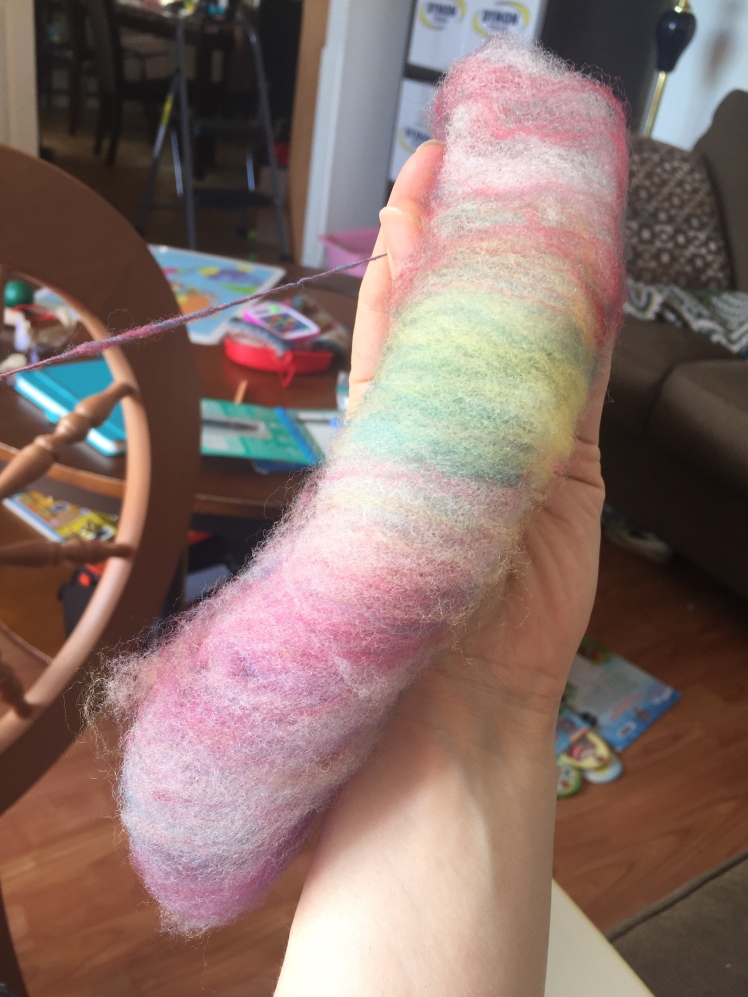
I just love looking at these rolags. They’re like something Monet painted. It was fascinating to watch the blending occur, as the cards took from each layer simultaneously. It did not, however, blend the color across the cards. The colors remained separate horizontally, but blended vertically.
Woolen prep is at its most extreme in this form: hand-carded rolags. Thankfully I have some experience in this area, so I found it pretty straightforward.
Extreme Worsted Prep
Combing I have always found more challenging, but I was determined to take the time to make some progress. In my worsted and semi-worsted yarns, I’m blending my worsted yarns as 2 parts coloured targhee and 1 part black Corriedale.

I’m thankful again to my friend Kelly who recommended this combing video. Several tips in there really helped it to click. Spreading the wool out on the tines before doing a pass was probably the most helpful tip.
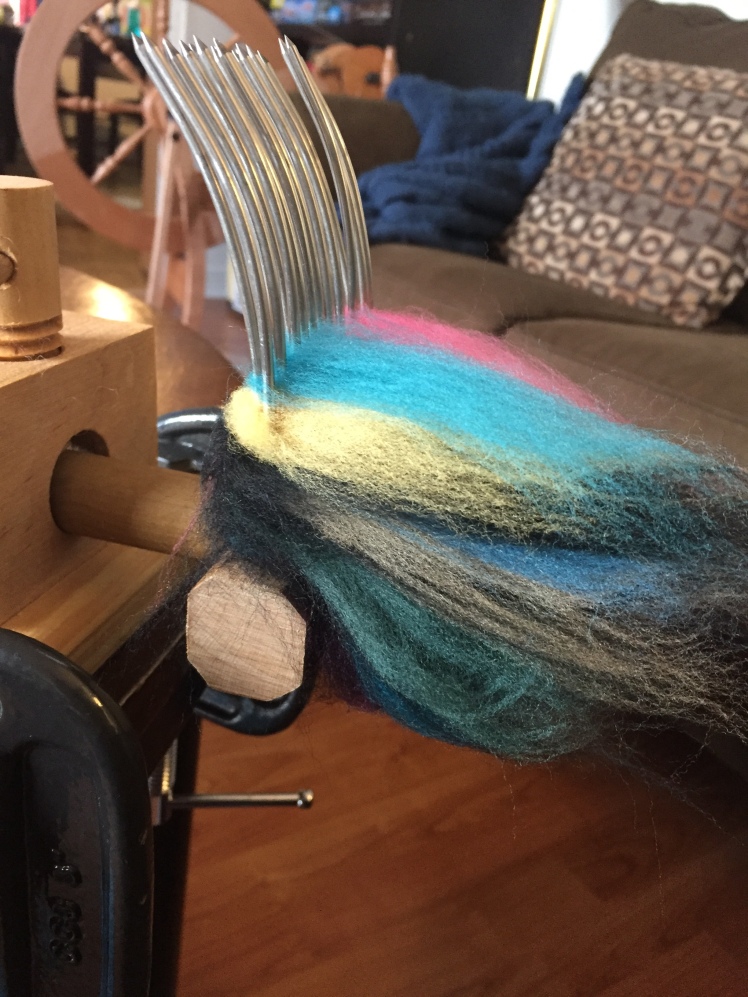
Blending colors on combs is amazingly effective! I only did one pass, and the colors were completely heathered together. I didn’t want them any more blended than that. When blending on combs, the colors pass through each other on both axes from the way you lay them on, unlike carding where they only blend down through the layers.



I pulled off these delightful tiny nests, just about 1 oz. I did lose about 1/3 of my fiber to waste, which is probably pretty good considering the relatively short commercial fiber. I saved the waste – might come in handy.
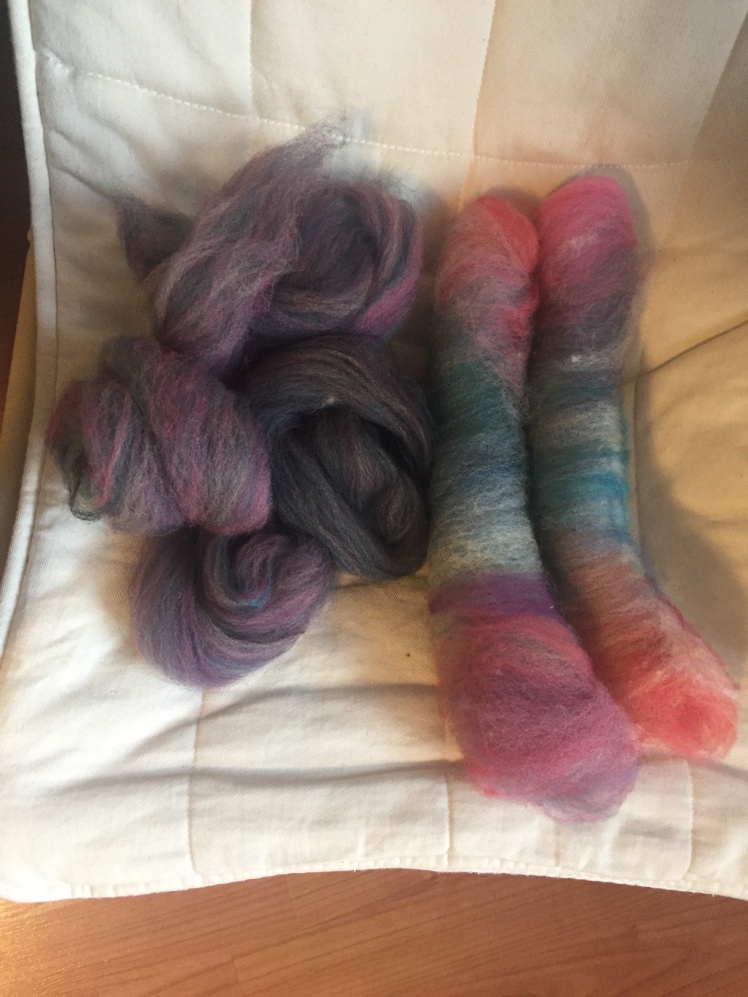
These two process are so different. You can see in this picture how the streaks of color go straight down the length of the combed top, while they cross perpendicular to the length of the rolag. That’s the base difference between these two preparations, and the foundation for the two different techniques used on them to make two very different types of yarn.
I’m loving this discussion as I mostly spin in between the edge of both of these styles, and I don’t have a lot of technical knowledge. So it is much appreciated and interesting
LikeLike
I am surprised you say that; you’re so experienced! But thanks for reading. I think I mostly spin in between as well. But I don’t even have a default since I’m always just messing around 🙂
LikeLike
I really like that heathered lilac you ended up with on the second blend. (I still don’t understand what you’re talking about most of the time with spinning — but I always like the pretty yarn pictures!)
LikeLike
Heheh thanks! I know I get jargony; I can’t help myself. I love how that one blended up too!
LikeLike
I mean, technical endeavours require technical language. Nothing wrong with that!
LikeLike
I love both in different ways. For me it’s the opposite — I didn’t have much trouble learning to comb, but I’m terrible at carding. I need to practice more.
LikeLike
Isn’t it funny how people learn differently! I think I’m impatient to comb as well, and find it harder to do while chilling on the couch. But it does make an incredible prep for spinning worsted, wow!
LikeLike